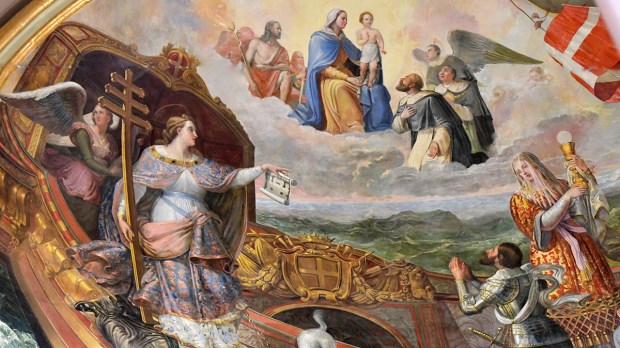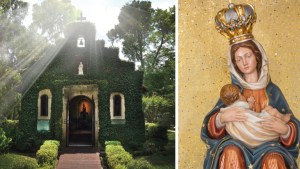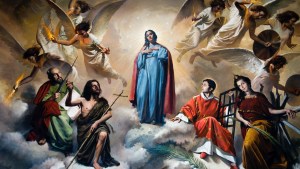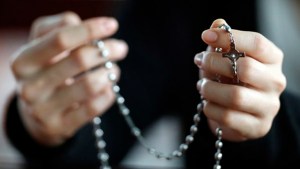1Mary reveals the Rosary
St. Dominic de Guzman (1170–1221), the founder of the Dominican Order, is the saint to whom Our Lady famously appeared in 1208 and gave the devotion of the Holy Rosary, to assist him in combating the Albigensian heresy then wreaking havoc in the Church.
This apparition occurred in southern France, in a small, out-of-the-way spot known as Prouilhe in the county of Languedoc. St. Dominic was laboring without success to convert souls back to the one true faith, and Our Lady gave him a powerful weapon: the Angel Gabriel’s greeting to the Virgin Mary at the Incarnation, and the pattern in which it should be prayed.
“The soul which recommends itself to me by the recitation of the Rosary shall not perish.”
~Our Lady to Saint Dominic
The Order of Preachers in Malta and Saint Pope Pius V
Around the year 1400, the Virgin Mary had appeared to a hunter in a cave in Rabat.
In circa 1450, three Dominican friars from the Sicilian Province founded the Order of Preachers in Malta, and in this same year, they requested to be given this cave; it was granted soon after. In a short time, the cave became a chapel, and then a church, and then a priory.
Later, the Dominicans in Malta were central in establishing the new city, Valletta. Indeed, Valletta and the Dominican community began to take roots during the years following the Blessed Virgin’s victory in 1565 (at the Great Siege — six years before the Battle of Lepanto) when, without delay, Grand Master de Valette thought of constructing the fortified city to protect Malta from another Ottoman attack.
Due to the lack of necessary funds, the main benefactor was the Dominican Pope St. Pius V, who donated the sum of 30,000 silver florins and sent his engineer Francesco Laparelli, so that on March 28, 1566, the first stone of the city was laid.
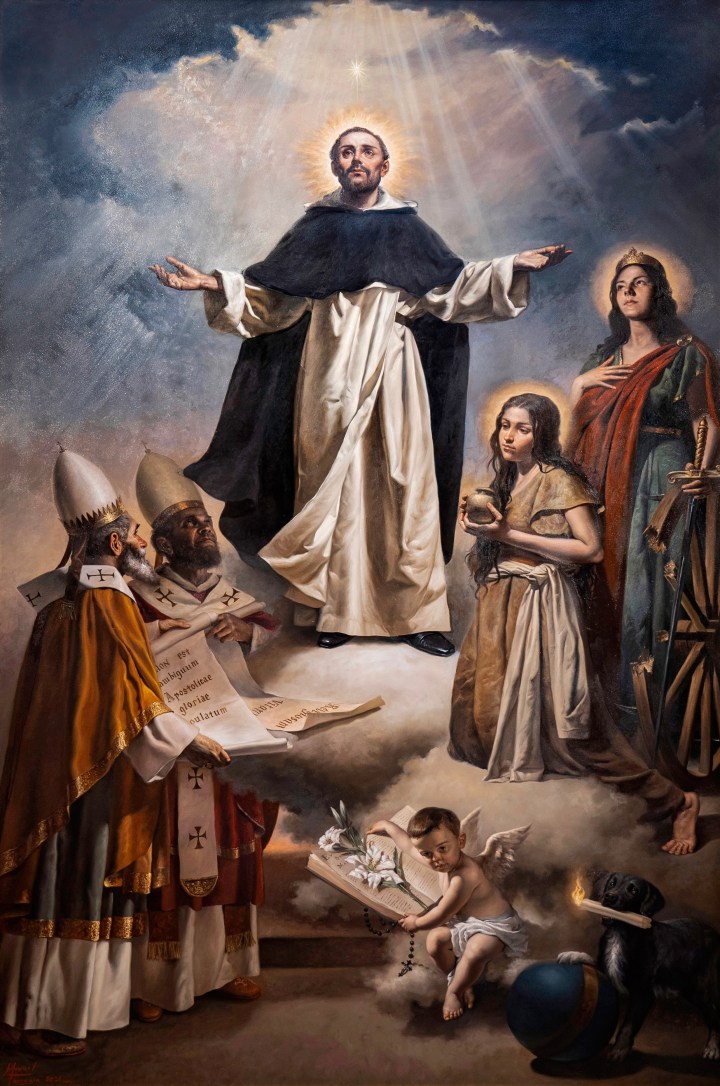
For two whole years the Dominicans would cross from their convent in Vittoriosa to the new city to assist the 4,000 workers constructing the bastions and other fortifications. It was for this reason that Fr. Damiano Taliana, Prior of the Annunciation Convent and Provincial Vicar of the Dominican convents in Malta, asked to be given a location to build a church and a convent. Grand Master Pietro del Monte accepted his request and, in 1571, a Dominican community established itself permanently and built a new church dedicated to St. Mary of Porto Salvo (of Safe Haven) and St. Dominic for the devotion of sailors. It was declared “the principal parish and matrix of the whole of the new city” by Pope Pius V through his Apostolic Bull Ex Debito Pastoralis on the 2nd July 1571.
After the earthquake of 1693, the original church had to be demolished, due to the extensive structural damage. The new church was rebuilt between 1802 and 1815 and consecrated on May 15, 1815. On May 25, 1816, it was elevated to the dignity of a Minor Basilica. Dedication took place on October 15, 1889.
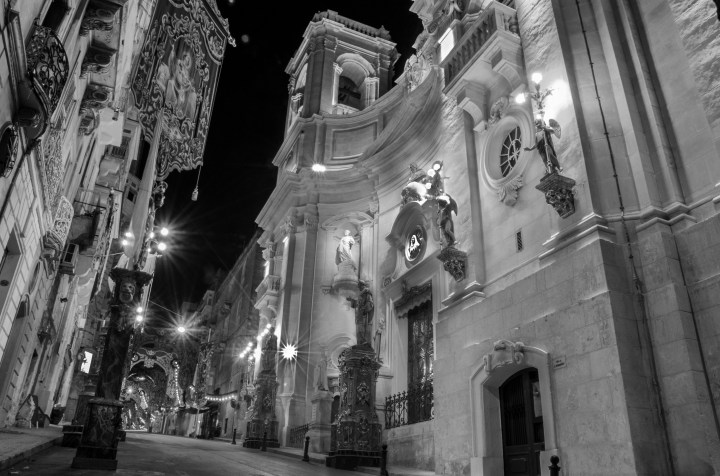
2Our Lady of the Rosary’s feast day established
The Battle of Lepanto follows: Another Marian Victory
Just a few months after his Apostolic Bull, specifically on October 7, 1571, the Pope instituted the feast of Our Lady of the Holy Rosary. On this day the fleet of the Holy League (a joint force formed by the Papal States, the Knights of Malta, The Kingdom of the Two Sicilies, Sardinia, the Kingdom of Spain, the Holy Roman Empire, Venice, Genoa and Savoy) fought and won an intense battle against the fleet of the Ottoman Empire – the Battle of Lepanto. The League was vastly outnumbered. Pope St. Pius V ordered the churches of Rome opened for prayer day and night, encouraging the faithful throughout Europe to petition the intercession of the Blessed Virgin Mary through the recitation of the Rosary. When word reached Pope Pius of the victory of the Holy League, he attributed it to the intercession of the Blessed Virgin Mary. Thus, he added a new feast day to the Roman Liturgical Calendar: October 7 became the feast of the Holy Rosary.
Actually, Pope St. Pius V is called the “Pope of the Holy Rosary,” as he was especially known for his devotion to the Blessed Virgin Mary and for being a great promoter of the Holy Rosary. Indeed, in 1569, he had already issued a Papal Bull, Consueverunt Romani Pontifices, in which he secured the uniformity of the Holy Rosary.
Among the very first Confraternities of the Most Holy Rosary
Documents show that in 1571, almost concurrently with the institution of the feast of Our Lady of the Rosary by Saint Pope Pius V, the Confraternity of the Holy Rosary was established in the Dominican church of the Annunciation in Vittoriosa, making it the first official Confraternity of the Holy Rosary to be founded in the Maltese Islands, and probably one of the very first in the whole World!
Also, the General Chapter of the Dominican Order, held in the city of Barcelona in 1574, under the mastership of Seraphinus Cavalli (Master of the Order from 1571-1578), issued a directive so that churches administered by the Dominicans do everything possible to establish Confraternities (mostly known as Fraternities) of Our Lady of the Rosary. In Valletta, the Archconfraternity of Our Lady of the Holy Rosary was founded in 1575. This Archconfraternity was associated with the church of St. Mary of Porto Salvo and the Dominican Priory, where the confraternity’s chapel is located.
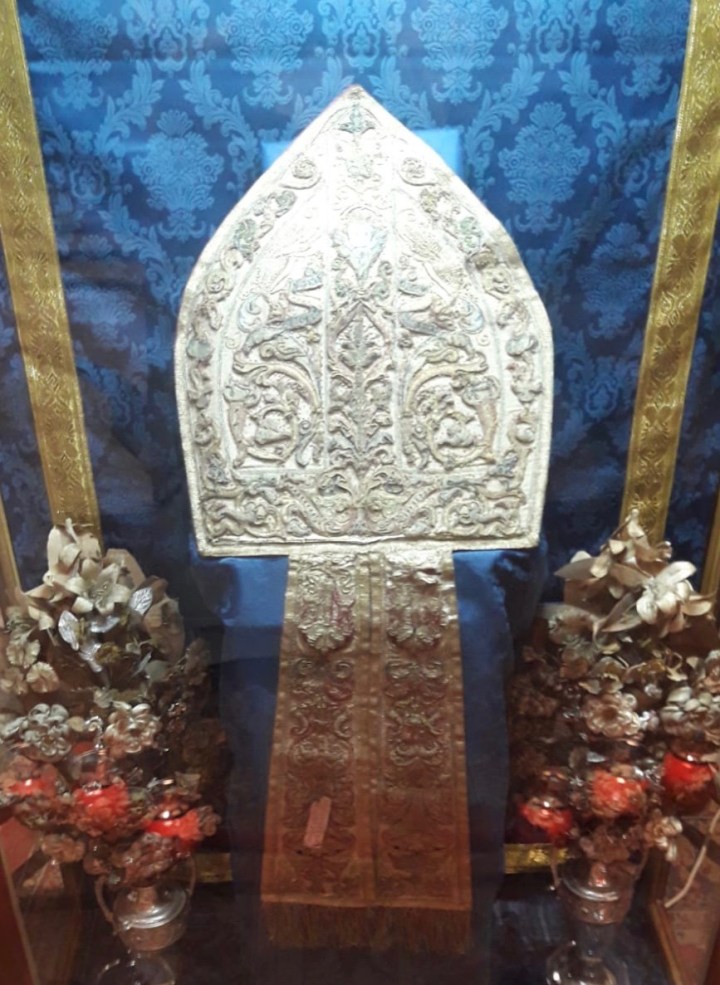
3The Luminous Mysteries, twice
St. Ġorġ Preca and the Holy Rosary
St. Ġorġ Preca, the first canonized Maltese saint, was born in Valletta and baptized in the church of St. Mary of Porto Salvo and St. Dominic. In 1999, Pope St. John Paul II declared him Venerable and on May 9, 2001, His Holiness beatified him, also referring to him as our islands’ “second father in faith,” the first being St. Paul himself!
Pope Benedict XVI canonized Fr. Ġorġ on June 3, 2007, referring to him as “a friend of Jesus.”
St. Ġorġ had an immeasurable devotion to the Blessed Virgin Mary, and did everything he could so more people come to love the Holy Rosary. He passionately repeated on end that, “Every day, the Virgin Mary waits for us until midnight to recite the Rosary.”
Every day, the Virgin Mary waits for us until midnight to recite the Rosary.
Saint Ġorġ
In 1957, Fr. Ġorġ wrote the five “Mysteries of Light.” What stirred him was John 8:12 “The light of the world.” Fr. Preca had concluded that the Rosary had a missing link – the public ministry of the Lord. Fr. Preca was also heard saying that he relished praying these ‘new’ mysteries and contemplating the Lord, who is “the Light of the world.”
On February 16, 2002, the 25th anniversary of his pontificate, Pope St. John Paul II published an Apostolic Letter titled Rosarium Virginis Mariae (RVM), in which he inaugurated the Year of the Rosary (from October 2002 to October 2003). In this document, His Holiness also introduced the five new Luminous Mysteries of the Rosary. This addition to the Holy Rosary, which was unchanged for over 400 years, attracted huge interest and intense debate.The media and journalists from all corners of the world, Catholics and non-Catholics, focused on these Mysteries, and took the opportunity to highlight that the Pope could have been inspired by the work of a Maltese priest – whom he himself had declared Blessed a few months before, in 2001 – Blessed Ġorġ Preca.
It is not known whether St. John Paul II’s mysteries were actually inspired by Dun Ġorġ’s work, but the striking similarity between these two sets of Mysteries, conceived 45 years apart, does trigger significant inquisitiveness. Interesting as well are the almost identical titles. If this inspiration occurred, various suggestions have been put forward on how His Holiness might have come across St. Ġorġ’s work.
One thing is for certain – God works in mysterious ways – and nothing is impossible for God. Perhaps both saints were divinely and separately inspired to help people contemplate the public ministry of His only begotten Son Jesus Christ. Dun Ġorġ’s Mysteries of Light became “public property” after two publications, one in 1973 and the other in 1987.
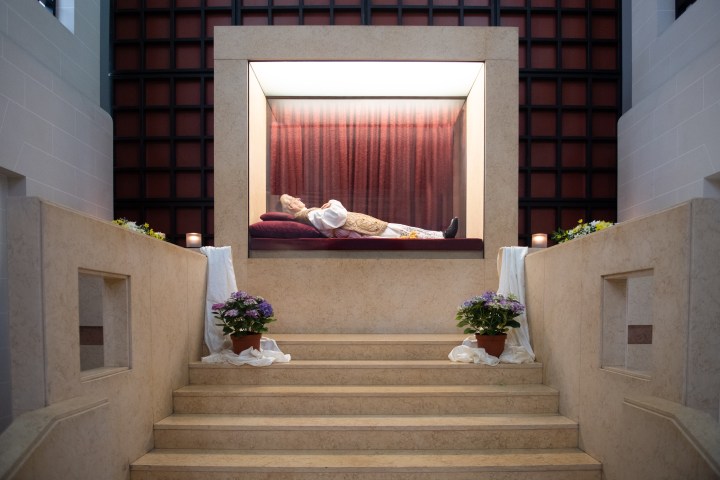
Following are the Mysteries of Light by Fr. Preca, and those by the Pope:
St. Ġorġ Preca’s work:
- After Jesus was Baptized in the Jordan, he was taken to the desert.
- Jesus reveals himself as true God by word and miracles.
- Jesus teaches the Beatitudes on the mountain.
- Jesus is transfigured on the mountain.
- Jesus takes his last supper with the Apostles.
St. John Paul II’s work:
- Jesus is Baptized in the Jordan;
- Jesus reveals Himself through the miracle of the wine at the wedding at Cana;
- Jesus proclaims the Kingdom of God;
- Transfiguration of Jesus on Mount Tabor;
- Jesus institutes the Eucharist.
It cannot be a coincidence that the Maltese Saint Dun Ġorġ was baptized in the Basilica of St. Mary of Port Salvo and St. Dominic, the Marian Shrine so famous for its spreading of the Holy Rosary in our Islands. Later, the Maltese Saint made it his life’s mission to spread devotion to the Blessed Virgin Mary and Her Rosary. He was also the first preacher to propose his version of the Mysteries of light, later introduced by another modern saint, Pope John Paul II.
~
References:
Attard A. Il-Fratellanza tar-Rużarju fil-Knisja tal-Lunzjata: L-Ewwel Waħda f’Dawn il-Gżejjer (The Confraternity of the Rosary in the Church of the Annunciation: The First One in these Islands). The Convent of the Annunciation – Birgu. [accessed on 1st October 2021]
Blessed George Preca – Diocesan Priest – Founder of the Society of Christian Doctrine, M.U.S.E.U.M.The Vatican. [accessed in November 2020]
Church of the Madonna of Fair Havens. National Inventory of the Cultural Property of the Maltese Islands. Superintendence of Cultural Heritage
Domenican order’s history in Valletta. Times of Malta. 27th July, 2018. [accessed on 1st October 2021]
Formosa J. Probable Origin of the Mysteries of Light. Catholic Planet. [accessed in November 2020]
Putzolu J. C. The Popes and the Rosary. Vatican News. [accessed on 1st October 2021]
